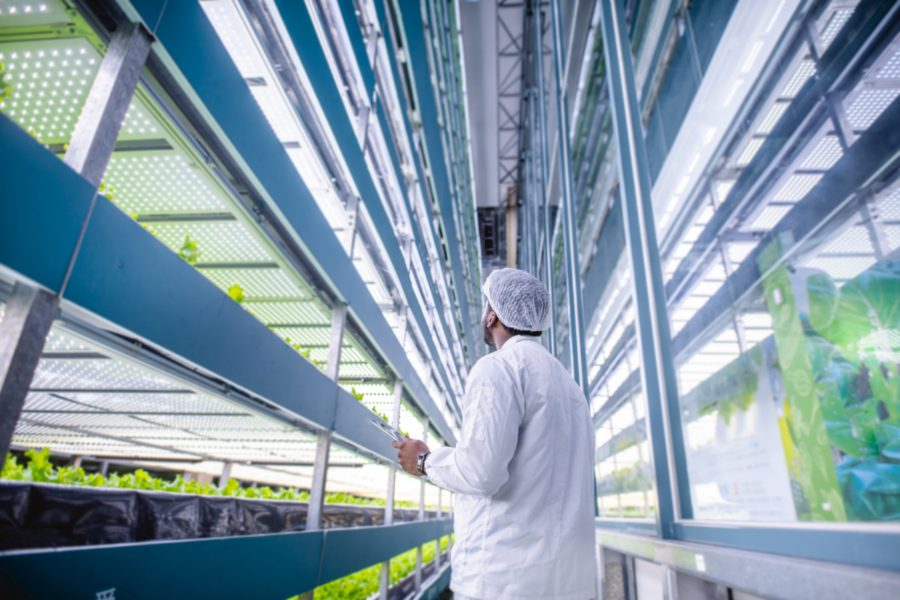Vertical farming is growing by leaps and bounds. In fact, the evolving form of agriculture has become a multibillion-dollar industry and is expected to reach $12.77 by 2026, growing at a compound annual growth rate of nearly 25%, according to Allied Market Research.
Quite simply, the concept “has gone viral,” said Dr. Dickson Despommier, a professor at Columbia University.
And Despommier should know. After all, he’s credited with conceiving the concept, back in 1999, during an especially spirited Medical Ecology course.
The Food Institute recently interviewed Despommier at length, in advance of its in-depth report on vertical farming, which is set to be published Tuesday (you can eventually download the report here). Here’s some exclusive content from that interview, which discussed numerous aspects of indoor farming, also known as controlled-environment agriculture (or CEA):
HOW WOULD YOU PERSONALLY DEFINE INDOOR FARMING AND VERTICAL FARMING?
Despommier: “Indoor farming includes all indoor farms, including vertical farms, and it also includes greenhouses. The only difference between a vertical farm and a greenhouse is height, because you can’t just set greenhouses on top of each other.
“Vertical farms have grow lights. If you use grow lights … you get more nutritious plants as a result of that, because you can tweak those lights to cause the plants to produce more things that we need, like vitamins.”
IN YOUR OPINION, WHAT’S A KEY BENEFIT PROVIDED BY VERTICAL FARMING?
Despommier: “By manipulating the indoor lighting systems … you can create plants that you could never grow outside. That’s one of the advantages.”
WHICH COUNTRIES ARE EMBRACING VERTICAL FARMING THE MOST?
Despommier: “The country that’s really got the most [vertical farming facilities] is Japan – Japan now has hundreds of vertical farms throughout the country, and they’re doing quite well. Taiwan has about 150, last I heard. Singapore has countrywide demand for locally produced food. The United States has a fair number, I would say in the neighborhood of 100, to 150.
HOW DO YOU ENVISION VERTICAL FARMING GROWING IN THE NEXT 5-10 YEARS?
Despommier: “I think the next issue will be, how can we franchise ourselves into a complete grocery store. And I know companies that are already doing that, so that’s in the wings. And, I think in another 5 years you’re going to see a versatility of crop selection that will force everything else into competition, and therefore [vertical farming] will succeed. That’s in the next 5 to 10 years.”











